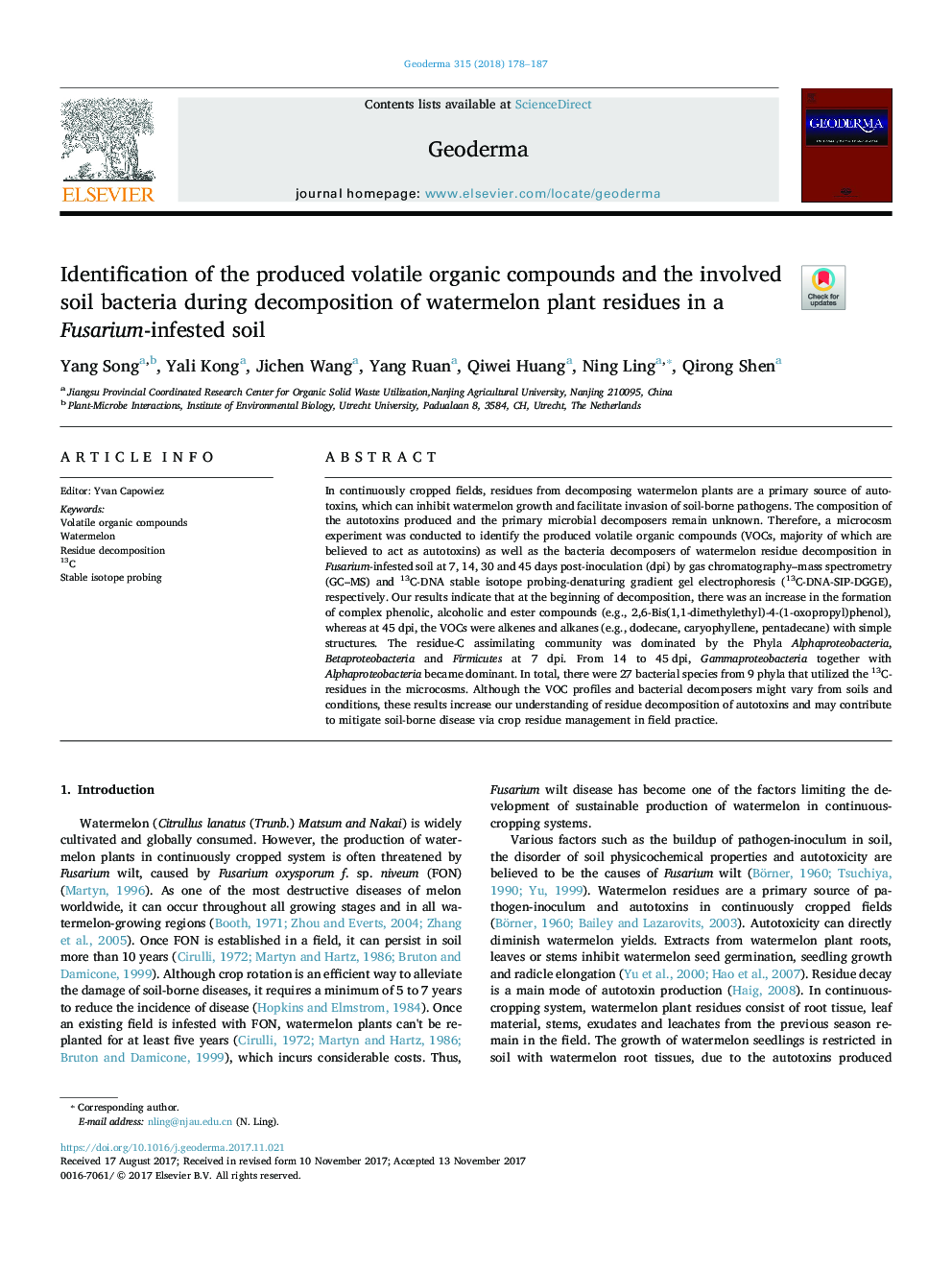| کد مقاله | کد نشریه | سال انتشار | مقاله انگلیسی | نسخه تمام متن |
|---|---|---|---|---|
| 8894290 | 1629402 | 2018 | 10 صفحه PDF | دانلود رایگان |
عنوان انگلیسی مقاله ISI
Identification of the produced volatile organic compounds and the involved soil bacteria during decomposition of watermelon plant residues in a Fusarium-infested soil
دانلود مقاله + سفارش ترجمه
دانلود مقاله ISI انگلیسی
رایگان برای ایرانیان
کلمات کلیدی
موضوعات مرتبط
مهندسی و علوم پایه
علوم زمین و سیارات
فرآیندهای سطح زمین
پیش نمایش صفحه اول مقاله

چکیده انگلیسی
In continuously cropped fields, residues from decomposing watermelon plants are a primary source of autotoxins, which can inhibit watermelon growth and facilitate invasion of soil-borne pathogens. The composition of the autotoxins produced and the primary microbial decomposers remain unknown. Therefore, a microcosm experiment was conducted to identify the produced volatile organic compounds (VOCs, majority of which are believed to act as autotoxins) as well as the bacteria decomposers of watermelon residue decomposition in Fusarium-infested soil at 7, 14, 30 and 45Â days post-inoculation (dpi) by gas chromatography-mass spectrometry (GC-MS) and 13C-DNA stable isotope probing-denaturing gradient gel electrophoresis (13C-DNA-SIP-DGGE), respectively. Our results indicate that at the beginning of decomposition, there was an increase in the formation of complex phenolic, alcoholic and ester compounds (e.g., 2,6-Bis(1,1-dimethylethyl)-4-(1-oxopropyl)phenol), whereas at 45Â dpi, the VOCs were alkenes and alkanes (e.g., dodecane, caryophyllene, pentadecane) with simple structures. The residue-C assimilating community was dominated by the Phyla Alphaproteobacteria, Betaproteobacteria and Firmicutes at 7 dpi. From 14 to 45Â dpi, Gammaproteobacteria together with Alphaproteobacteria became dominant. In total, there were 27 bacterial species from 9 phyla that utilized the 13C-residues in the microcosms. Although the VOC profiles and bacterial decomposers might vary from soils and conditions, these results increase our understanding of residue decomposition of autotoxins and may contribute to mitigate soil-borne disease via crop residue management in field practice.
ناشر
Database: Elsevier - ScienceDirect (ساینس دایرکت)
Journal: Geoderma - Volume 315, 1 April 2018, Pages 178-187
Journal: Geoderma - Volume 315, 1 April 2018, Pages 178-187
نویسندگان
Yang Song, Yali Kong, Jichen Wang, Yang Ruan, Qiwei Huang, Ning Ling, Qirong Shen,